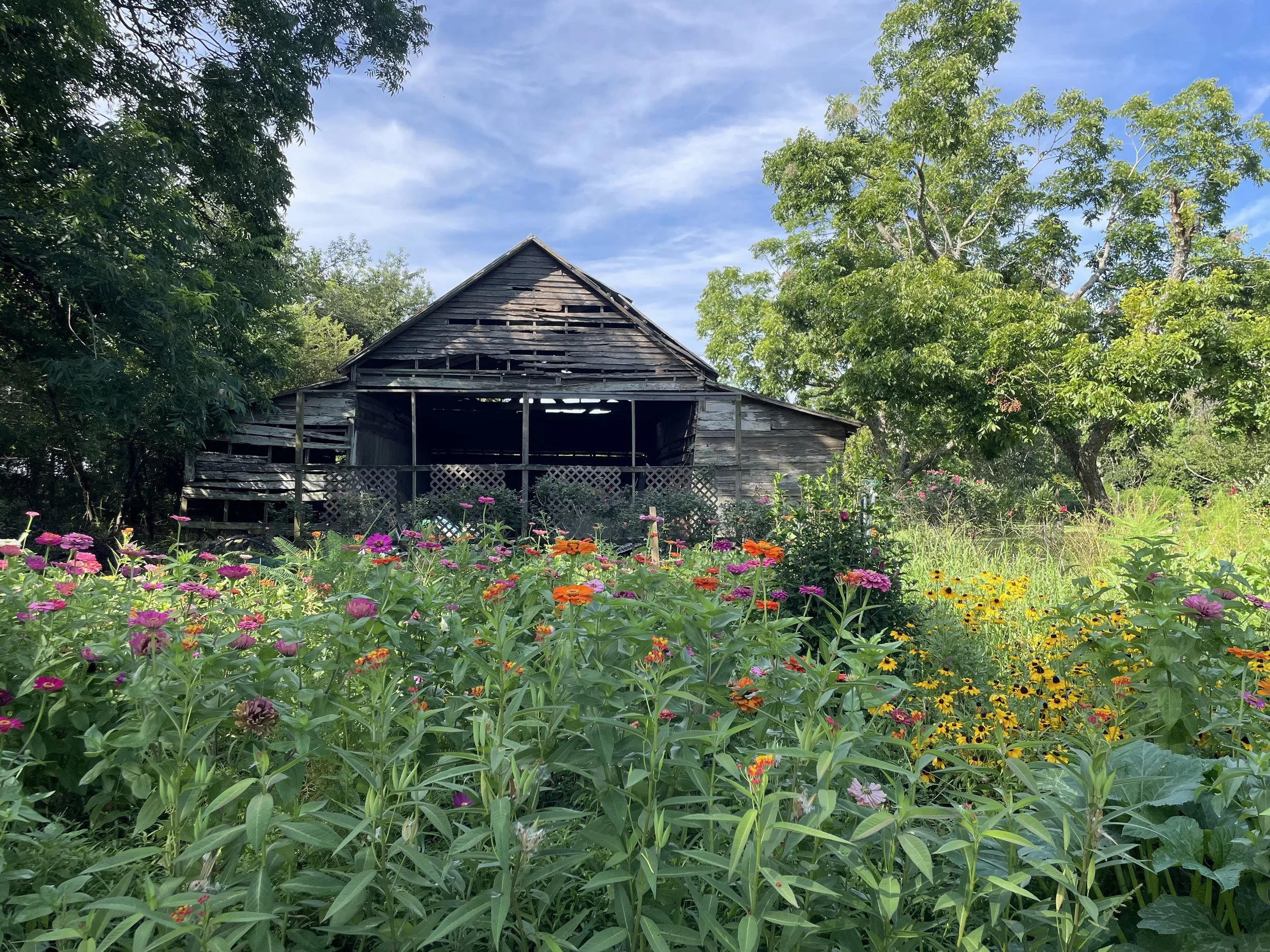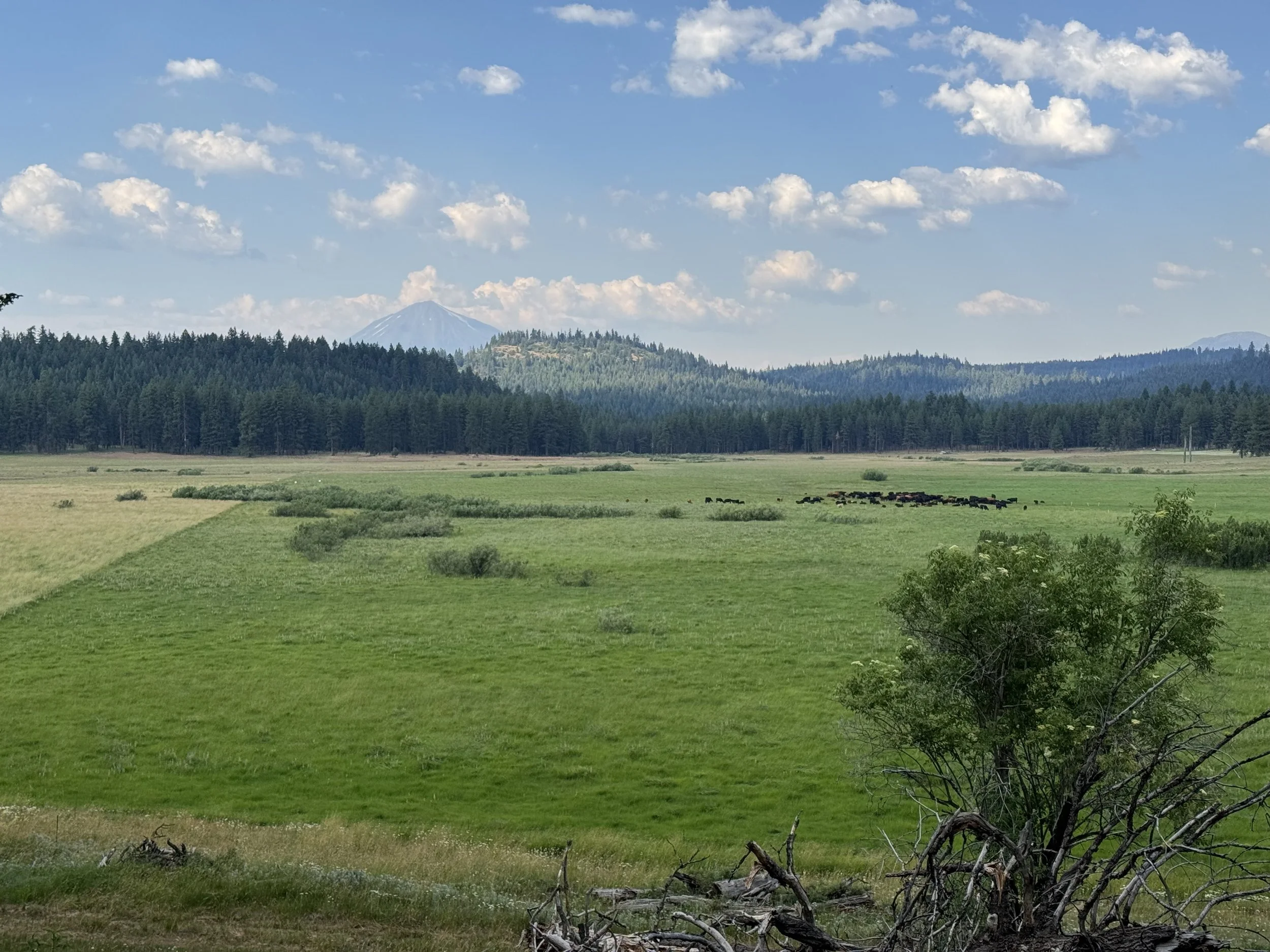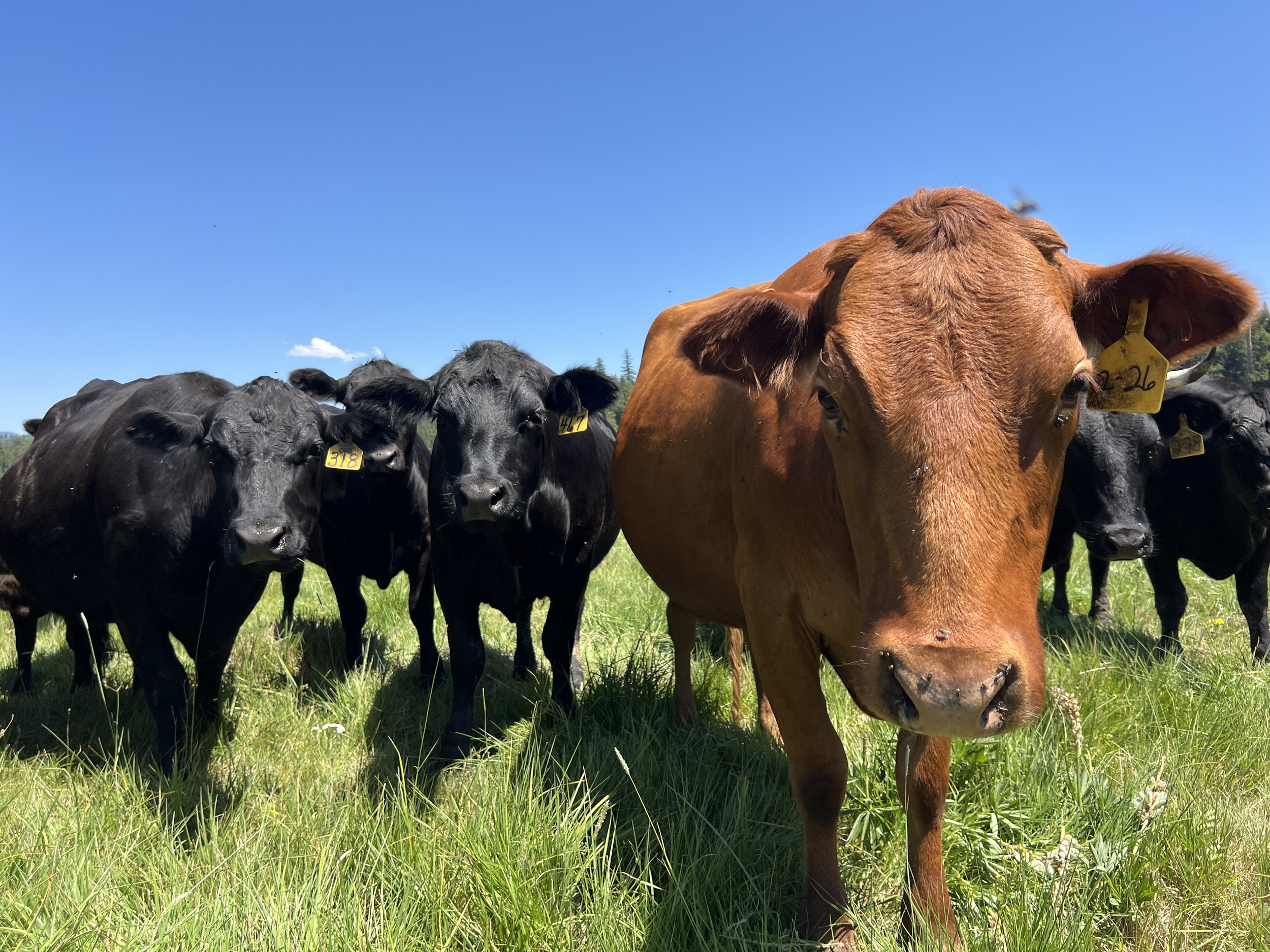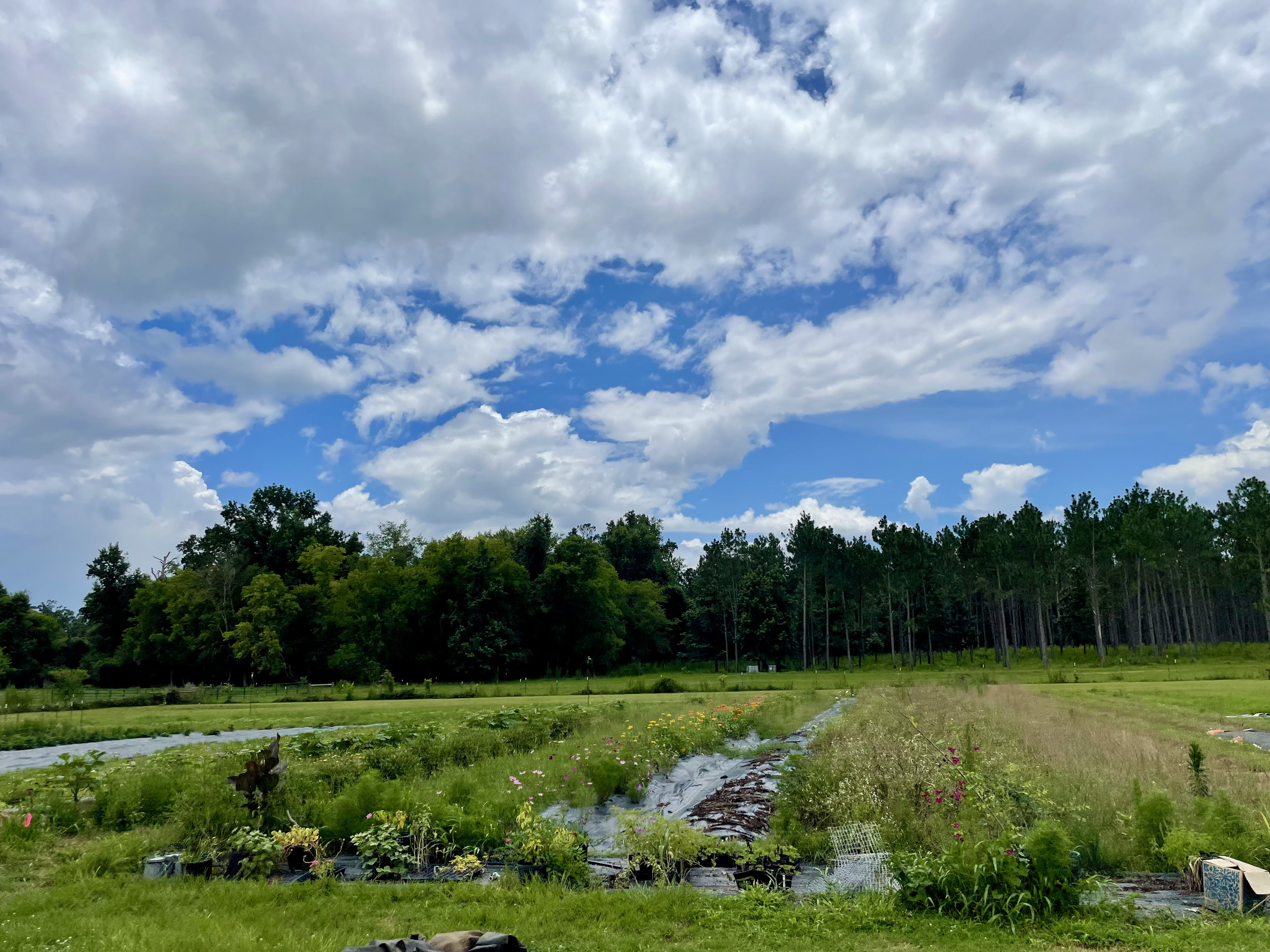Land Core Newsletter - July 2025
Dear friends and colleagues,
Summer is a powerful reminder of the vitality and abundance that soil health brings to our landscapes and communities. During this time, the Land Core team has had the privilege of visiting partner farms that exemplify the transformative power of working with nature.
From the thriving, vertically-integrated systems of White Oak Pastures to the verdant fields of Matt Rales and Abigail Fuller’s new ranch in Ashland Oregon, our travels have taken us to the heart of soil health practices in action this month. These pioneering land stewards are more than just farmers, they are leading voices in a growing soil centered movement.
The examples we’re witnessing on the ground speak volumes: regenerative systems are not only improving soil health and biodiversity, they’re building resilience and profitability even amidst uncertainty. These farms are living proof that a healthier, more secure agricultural future is within reach.
Read on for updates and analysis on the major policies shaping agriculture, including some notable wins and progress, and the work being done to support and build healthy soils across the U.S.
Warmly,
The Land Core Team
Policy Updates
Reconciliation Recap
The passage of the sweeping “One Big Beautiful Bill” earlier this month brought mixed reactions from all sectors of the agricultural community. Aside from the sweeping overhaul to federal farm and nutrition policy, the bill increases support for crop insurance, disaster relief and research, as well as tax credits for bioenergy and investments in specialty crop innovation - tools that if implemented the right way, can support soil health practices.
However, while it boosts the overall agricultural safety net, it falls short of directly prioritizing soil health outcomes or linking subsidies to improvements in soil function. As the national conversation on resilient agriculture evolves, we underscore the need for policy mechanisms that explicitly reward soil-building practices.
Read our analysis on the impacts of the bill on soil health here.
Ag-Appropriations (FY26)
On July 10, Senate ag-appropriators advanced their version of the annual spending bill, a more moderate version than its counterpart in the House; the bill would require Congressional approval before closing or cutting staff at USDA field offices.
Wins for soil health: The bill’s accompanying report language included a section dedicated to Soil Health, encouraging “more technical assistance funds to establish standard protocols… to evaluate gains in soil health”. The language also includes multiple nods to soil health throughout the Conservation and Research sections, including expanded support for cover crops.
Farm Bill Updates
With the reconciliation bill now behind us, attention turns back to the Farm Bill. While headlines have focused on the likely political challenges, it is seeming increasingly probable that some version of a Farm Bill can pass. This is a time when those who are invested in seeing strong soil health policies should consider reaching out to their representatives, especially those on the ag committee (list). Some details:
House Ag Chair G.T. Thomspon reported that they are eyeing September for renewed Farm Bill negotiations to begin in earnest.
The legislation is being referred to as “Farm Bill 2.0”, or a “skinny Farm Bill”, given the amount of farm and nutrition policy that was included in the reconciliation bill
Their focus for this round of negotiations include controversial provisions regarding industrial hemp, lawsuits against pesticide companies, reauthorization of Conservation Reserve Program (CRP), and some nutrition program eligibility concerns.
Land Core will be offering recommendations on supporting soil health in both the conservation and crop insurance titles, as well as tracking the process as it advances.
Rooted In Health
In advance of the MAHA Commission’s policy report due August 12, Land Core just published new recommendations to the Department of Health & Human Services (HHS). The recommendations underscore the connection between soil health and human health, supported by a growing body of research. We highlight the pivotal, but often overlooked role that soil health can play in public health and nutrition policy, federal procurement, research and more. Read the full document here.
Meanwhile, the first Capitol Hill MAHA Roundtable on soil health was held in Washington, D.C. on July 15, hosted by Sen. Roger Marshall, R-Kan., and including both Secretaries Kennedy and Rollins. Sec Kennedy opened with a pathway to regenerative agriculture, noting:
“We have farming practices now that are unsustainable. They’ve been dictated… in many ways, by federal policies, and we need to transition.”
The Land Core team was encouraged by the dialogue, and grateful for the opportunity to contribute to recommendations shared by panelists.
Photo by Matt Rales. Cattle grazing on green pastures on his regeneratively managed ranch in southern Oregon.
Risk Model Updates
We are excited to share that our team is about to release the yield risk modeling of crop rotations across four additional states: MN, WI, SD and OH, building on, and refining, our work in Illinois. We will be working on updating the beta version of our online Soil Health Risk Model Tool in the coming months.
Cover Crop Mapping: We are also working to release our team’s recently completed, remotely sensed cover crop data set for the upper midwest. Mapping the presence or absence of winter cover crops, the data will be available for non-commercial use. We look forward to having that data be used and built on by the research community in the months and years to come to inform and further drive adoption of this crucial soil health practice.
We’re Hiring!
Land Core is seeking to hire talented, pragmatic, and dedicated professionals across programs management and policy.
See more details of the two, full time roles at landcore.org/hiring
Catch Us On Social Media
Bill Tracker Updates
Our quarterly newsletter went out on June 24th and recapped all relevant legislation introduced and reintroduced between April and June 15, 2025. Since then we have noted a slowdown in the introduction of new bills, likely a result of the full focus on getting the reconciliation bill over the line.
If you missed it, you can see it here.
Or if you want to sign up for Bill Tracker alerts, sign up here.
In Case You Missed It
Digging into the significance of soil moisture at the 2025 National Soil Moisture Workshop
Held June 3–5 at Colorado State University, the 2025 National Soil Moisture Workshop brought together leading scientists, practitioners, and policymakers to explore how actionable soil moisture science can transform land management. The event, hosted by USDA, NOAA & USFS, emphasized the critical connection between soil moisture monitoring and broader soil health outcomes, from improving drought resilience to optimizing water use and crop productivity. Learn more about key takeaways & view presentation recordings at the link above.
By NOAA/NIDIS | July 3, 2025
Upcoming Events
2025 Soil Health & Climate Resiliency Days
The New York State Soil Health Initiative seeks to build on the current strengths and momentum of key stakeholders and coordinate a network for information exchange, prioritization, and identification of barriers and opportunities in order to facilitate farmer adoption of soil health practices.
July 17 - Oct 7, 2025 | New York State
Land Stewardship Project: Soil Builders Network
The Land Stewardship Project’s Bridge to Soil Health initiative works with crop and livestock farmers and other professionals that view soil as a long-term investment. LSP acts as a bridge between emerging soil health information and local farming practices. Join the network to get regular updates on workshops, field days, on-farm demonstrations, and emerging soil health research.
See remaining July dates and locations of these events on the calendar here.
Reminder:
SWCS International Annual Conference - Conservation Coast to Coast 2025
On Tuesday, August 3rd, Land Core co-founder, Aria McLauchlan, will present “Key Takeaways from a Soil Health Risk Model for Policymakers, Lenders, and Insurers”.
August 3-6, 2025 | Costa Mesa, California
What We’re Reading & Watching
Land Core publishes summer reading (& watching) list: “What We’re Reading”
Soil health, storytelling, and summer inspiration from the Land Core team.Looking to add to your summer reading (and watching) list? Here’s what’s been catching our attention lately—from a documentary you can watch with your family, to recent research on nitrogen use efficiency. | July 2, 2025
In the News…
Op-ed: The Big Beautiful Bill won’t make America healthy again
An op-ed analyzing the conflicting agendas of the MAHA initiative and the Trump administration’s “One Big Beautiful Bill,” highlighting how the latter's substantial cuts to Medicaid and nutrition programs contradict MAHA’s preventive health goals, thereby creating a perplexing landscape for public health policy and accountability.
By Aviva Musicas and Anupama Joshi, Civil Eats | July 15, 2025
Are cover crops worth the investment?
Cover crops offer immediate benefits like reducing erosion, suppressing weeds, and improving water infiltration. Over the long term, they enhance soil health by building organic matter and supporting beneficial microbes. While adoption is limited due to cost and labor concerns, cover crops are a powerful tool for more sustainable and resilient farming.
By Drew McCutchen, Farm Progress | July 10, 2025
From food aid to dog chow? How Trump’s cuts hurt Kansas farmers
Kansas farmers are facing economic hardship due to recent federal policy changes, including tariffs that drastically reduced exports to major markets like China. Cuts to international food aid programs have eliminated key buyers of surplus grain, further depressing prices. These combined pressures are forcing farmers to reassess their support for current policies as they struggle with falling revenues and rising uncertainty.
By Elizabeth Williamsen, New York Times | July 7, 2025
Economic Outcomes of Soil Health and Conservation Practices on US Croplands
This report by ERS aims to evaluate the economic implications of adopting soil health and conservation practices in U.S. agriculture. It highlights that while these practices can enhance soil quality, water conservation, and productivity, their economic benefits to producers vary based on factors like implementation methods, regional conditions, and individual risk tolerance. The report also notes that adoption rates differ across regions, influenced by these variables.
By Maria Bowman + 9 others, USDA ERS | June 25, 2025
New adventures await beyond soil health
Don Donavon, district conservationist for the NRCS, retires after 42 years of service to Indiana’s farmers. He’s got one piece of advice to leave farmers -“...keep moving forward on your soil health journey. If you have not started that journey, start today.”
By Don Donavon, Farm Progress | June 12, 2025
Get Involved
🌱 Donate to Land Core! Support our programs to advance soil health in 2025 and beyond.
🌱 Sign up for our monthly newsletter.
🌱 Explore our Federal Soil Health Bill Tracker and sign up for monthly soil health legislation updates delivered to your inbox.







